While we were enjoying Comic Arts Brooklyn this year, my partner Marguerite Van Cook and I took a break from the excitement of promoting our new Fantagraphics Book The Late Child and Other Animals to go across the street to a little coffee bar and have a snack. The young counterperson noted the influx of odd personages hauling portfolios and piles of comics and asked, “is that a convention?”
I replied, “Well, a convention is more like one of those huge things with wrestlers, porn stars and superhero comics, all mixed together with a lot of cosplayers. This is more of a gathering of especially individualistic birds in the alt/lit comics scene. I guess you could call it a ‘murder’ of cartoonists.”
She laughed and asked about the origin of that phrase, which usually describes a flock of crows. But not to further elaborate that conversation, what follows is a review sampling of comics, many of them with poetical aspects, that I got at CAB and other recent releases. Note that I don’t actually try to kill my subjects, but rather to remark on their positive aspects, wherever possible.
____________________________________________________________
Jungle Book by Harvey Kurtzman (Kitchen Sink/Dark Horse, $24.99)
A rare solo effort by the auteuristic creator of E.C.’s two excellent war comics titles Two-Fisted Tales and Frontline Combat, working in the satiric mode he initiated for Mad. Now, I do very much like Kurtzman’s solo work; see Fantagraphics’ recent collection of most of his solo E.C. stories, Corpse on the Imjin (which also contains a smattering of his odd, briefer collaborations, like those with Alex Toth and Joe Kubert). His own drawings have a powerful thrust and direct emotionality that can be lost or greatly altered when filtered through the sensibilities of the artists charged to re-illustrate his layouts. In Jungle Book, which was originally released by Ballantine Books in 1959 as a dingy, downscale paperback, Kurtzman’s targets include a jazz/noir mashup, a TV western and most impressively, in “The Organization Man in the Grey Flannel Executive Suite”, a cutting sendup of the fierce sexism that polluted the offices of his former employer, ex-Marvel Comics owner Martin Goodman. This brilliant strip is nonetheless disparaged as “weak” by famed misogynist and Kurtzman discovery R. Crumb, in the afterthought conversation between the underground artist and Peter Poplaski that cabooses this otherwise beautifully-produced hardcover reprint volume.
____________________________________________________________
Andre the Giant: Life and Legend by Box Brown (First Second, $7.99)
Brown’s biography of wrestling star Andre Roussimoff joins a small group of comics masterpieces that deal with this most theatrical of sports, from Jaime Hernandez’s Whoa Nellie from 2000 to a series of tongue-in-cheek horror collaborations by Mike Mignola and Richard Corben in more recent years, including their 2011 graphic novella House of the Living Dead. Brown’s is a remarkably consistent effort with effective graphic sequences such as the one pictured above and I also admire his restrained handling of the heavily staged fight scenes, as well as his unusual architectural establishing shots. Brown’s stark, spare and precise cartooning create a unique mood, as they contextualize Andre’s success with a tragic acknowledgement of the unrelenting sense of otherness and diminished opportunities for social interaction that he experiences due to his exceedingly unusual scale; as well as his size’s harsh repercussions on his health.
__________________________________________________________
Fear My Dear: A Billy Dogma Experience by Dean Haspiel (Z2 Comics, $19.95)
The pair of poetic graphic stories in Fear, My Dear reflect Dino’s unfettered physicality and passionate persona. Since winning an Emmy award for his TV collaboration with Jonathan Ames, Bored to Death and The Alcoholic, their graphic novel from Vertigo, Haspiel has if anything become bolder and more exuberant. For this nicely produced hardcover from Josh Frankel’s new Z squared imprint, the artist uses a four-panels-per-page grid format and a monochromatic color scheme (red in the first piece, yellow and orange in the second, both with an elegant use of white for emphasis) to further define the relationship between his creator-owned characters Billy Dogma and Jane Legit. Their romance haunts post-apocalyptic urban rubble and breaks through to a star-crossed dreamscape, only to end up where they knew they must: together.
____________________________________________________________
How to Pool and Other Comics by Andrea Tsurumi (self-published, $3.00)
Marguerite and I used to bask our way through the East Village dog days at the Pit Street Pool, and more recently as guests of the Miami Book Fair, we whiled away every spare moment by the steamy roof pool at our hotel. So, I can totally relate to the lead piece in Tsurumi’s new minicomic, wherein the artist collects a variety of witty graphic vignettes about group soakings in fluoridated waters, among other delicately drawn ironies and anthropomorphisms.
____________________________________________________________
Inkbrick #1 by Rothman, Sullivan, Kearney, Tunis, et al (Inkbrick, $8.00)
This pocket-sized anthology of comics that incorporate, or are adapted from, poetry is made up of remarkable short stories done in a variety of mediums that range from full color to black & white. Immediate standouts for me are Paul K. Tunis’s watery montages for “Avenge Me, Eavesdropper,” Gary Sullivan’s oblique ink rendering of horrific Asian mythologies, “Black Magic”; Simone Kearney’s whimsically etched “Mobilization”; and editor Alexander Rothman’s “Keeping Time” (pictured above), a piece apparently finished in colored pencils that inventively expresses non-visual sensory impressions such as sound, smell and touch.
____________________________________________________________
The Graveyard Book, Volumes 1 and 2 by Neil Gaiman, P. Craig Russell et al (Harper Collins, $19.99 each)
Although The Graveyard Book continues Neil Gaiman’s anti-collaborative self-hype at the expense of his artist partners, I do appreciate P. Craig Russell’s adaptations of Gaiman’s stories into comics form. Russell’s elegant cartooning and storytelling are paced far better than if Gaiman had scripted; it worked beautifully for Murder Mysteries, Coraline and The Dream Hunters. Now, for Gaiman’s morbidly charming tale of a live boy shielded from a cabal of serial killers by the shades of the deceased occupants of a cemetery and raised by them to young adulthood, Russell acts artistically in a way similar to Kurtzman’s E.C. methodology: he adapts the text and does layouts; the finishing artists serve as illustrators. This makes for a surprisingly smooth and consistent read. I particularly admire the polished renderings of Kevin Nowlan (seen above), Scott Hampton, Jill Thompson and the Russell-miming Galen Showman; and although a somewhat discordant note is sounded by the grotesqueries of Tony Harris, the whole is unified by colorist Lovern Kindzierski and illuminator Rick Parker, who hand-lettered the text, for me a visual treat in these days of page-deadening digital fonts.
____________________________________________________________
Lazarus #1-9 by Greg Rucka, Michael Lark and Santi Arcas (Image Comics, $2.99 each)
I drew one of Greg Rucka’s first comics stories (“Guts” in DC/Vertigo’s Flinch #8, 2000), but it seems to me that the writer doesn’t take as much advantage as he might of the properties that are unique to comics—almost everything he does might work just as well if not better as TV shows. In his 2012 collaboration with Matthew Southworth, Stumptown, it is Southworth’s expressive drawing that provides most of the interest and its most effective use of the medium is that the artist rendered Vol 2, #4 with a Toth-esque sideways, widescreen layout. For Lazarus, a story of a female assassin in a dystopian, nearly medieval America run by a select group of powerful families that is absorbing enough and has had some striking moments, but still often has a feeling of deja vu about it, a lot of the heavy lifting is provided by artist Michael Lark’s cinematic near-photorealism, accomplished in collaboration with Santi Arcas’ hi-tech color graphics.
____________________________________________________________
Thought Bubble #4 by Kot & Sampson, Lim & Rios, Starkings & Sale et al (Image Comics, $3.99)
This color tabloid is a showcase for the participants in the UK’s Leeds Comic Art Festival. My favorite piece is a sort of gentle advisory poem that in its course expresses a goal that many sensitive artists hold dear: that of “making things that help other people feel less alone.” It is the work of the writer of Image’s fascinating rotating-artist series Zero, Ales Kot, expressively drawn with upended, widescreen and oblique imagery by Alison Sampson, who just won a British Comic Award for emerging talent; and nicely colored by Jason Wordie. Also notable: a beautiful page by Hwei Lin and Emma Rios; and an Elephantmen strip written by Richard Starkings and elegantly rendered in ink washes by Tim Sale.
____________________________________________________________
Nightworld #s 1-4 by Adam McGovern, Paolo Leandri & Dominic Regan (Image Comics $3.99 each)
A tale of questing, embattled superhero-ish spirits, Nightworld manages to not only convey an approximation of the look of a Jack Kirby comic book, but it also comes closer than anything else I have seen to capturing something of the spirit of that master’s fierce and restless creativity. Artist Leandri hits a spot somewhere between majoring in Kirby, minoring in Steranko and echoing the early work of Barry Smith, back in the day when he was emulating Jack. Leandri’s spreads can look remarkably as if they were actually drawn by Kirby and his character designs and action passages likewise (see example above), without ever feeling as appropriated, or as forced, as those by some other artists who attempt to adhere as closely to the same model. These comics are colored by Regan with an oddly chosen palette that, again, is reminiscent of Kirby’s psychedelic experiments with Dr. Martin’s dyes. Moreover and significantly, writer McGovern’s poetic voice uniquely grasps a sort of post-traumatized and humane melancholy of narrative, the most tragic scenes of which are appropriately followed and leavened in a Shakespearean mode by bursts of frenetic humor, that can be seen in Kirby’s best writing.
____________________________________________________________


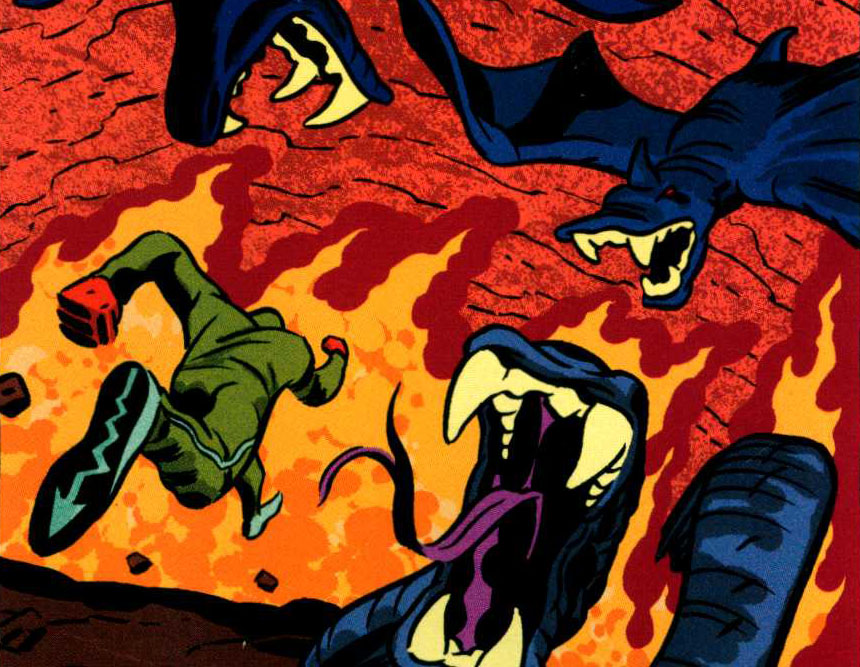
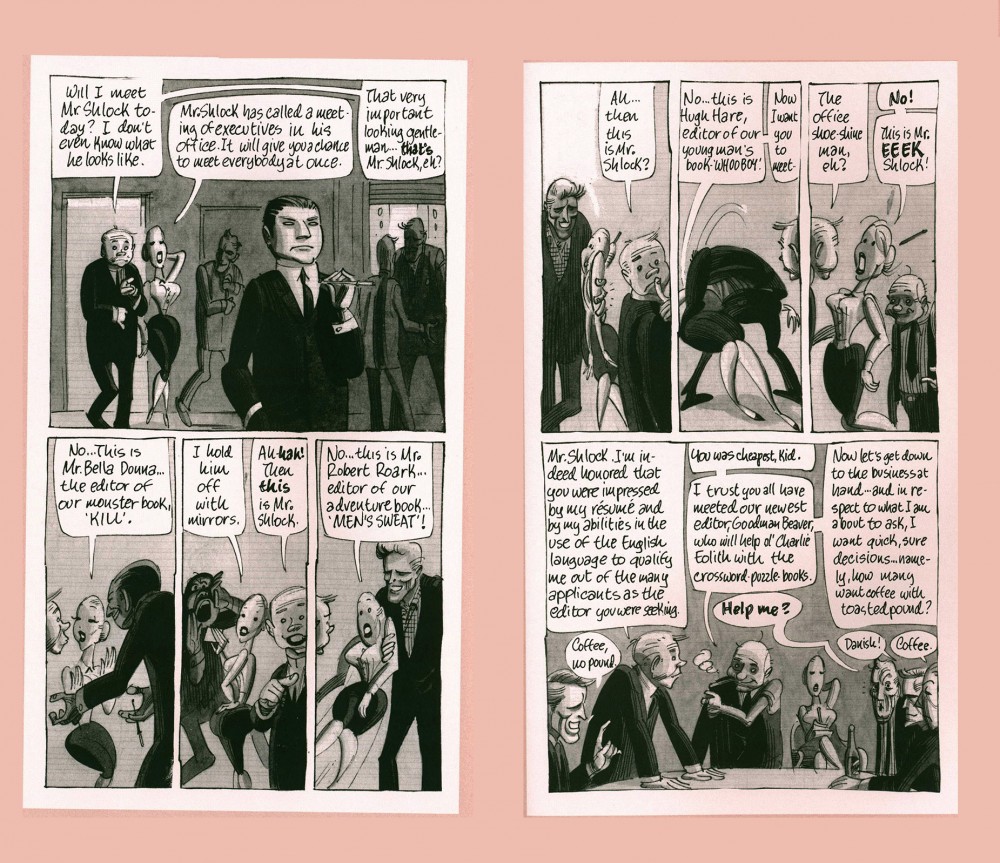
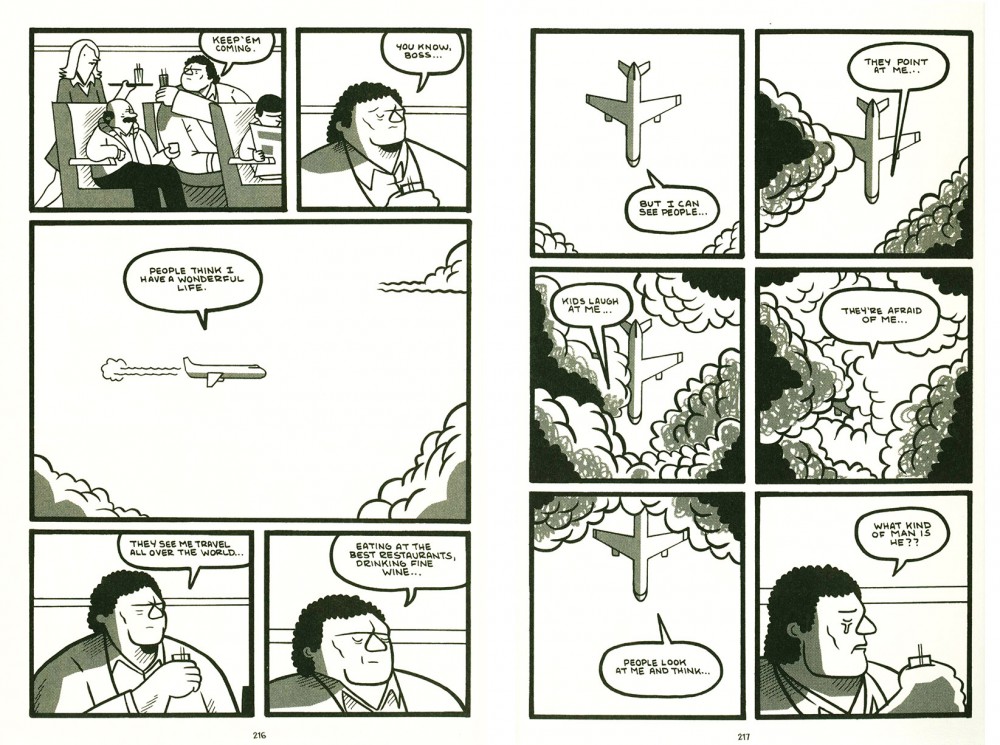
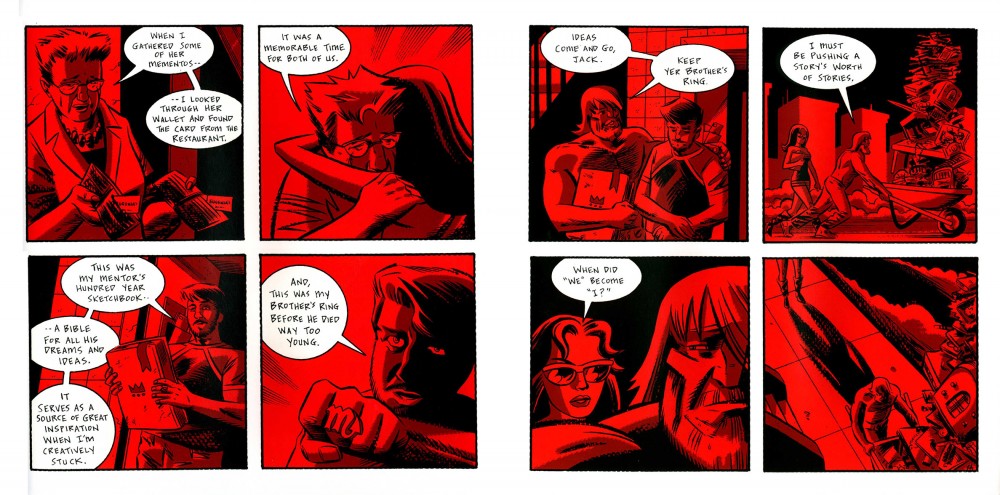
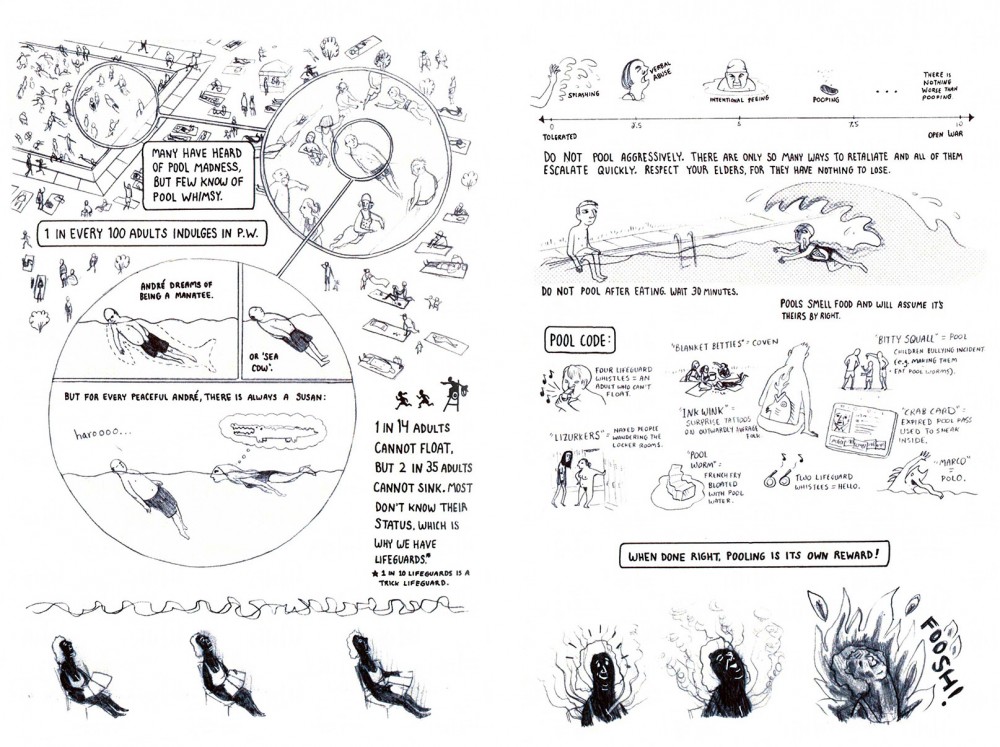
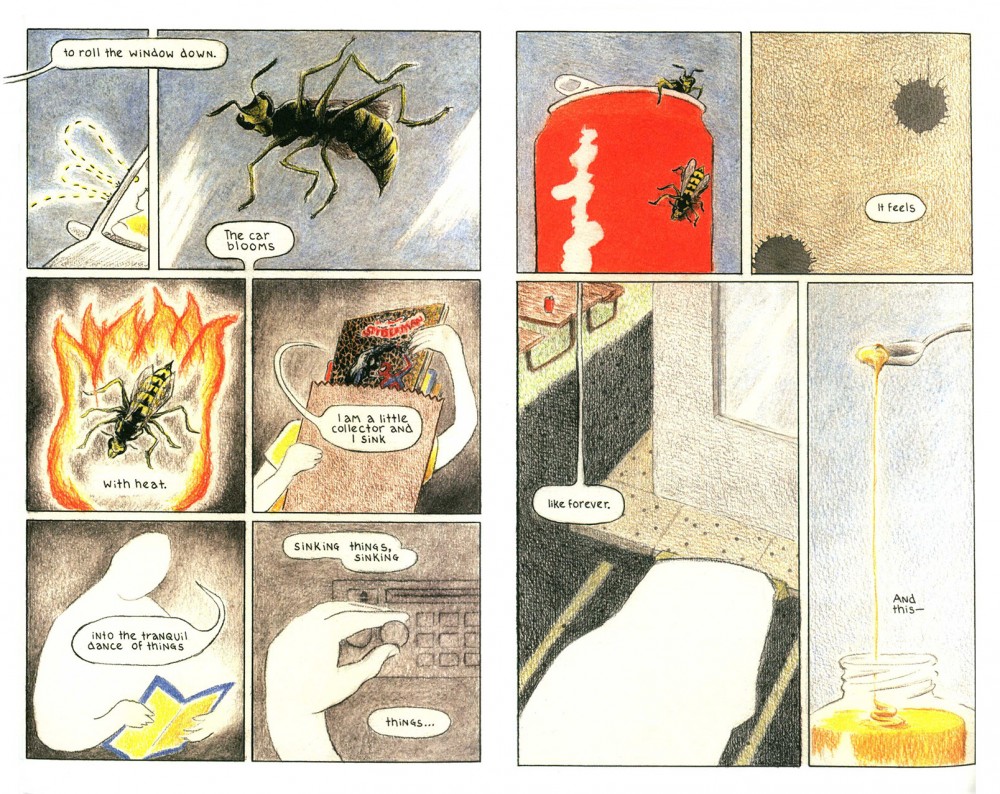
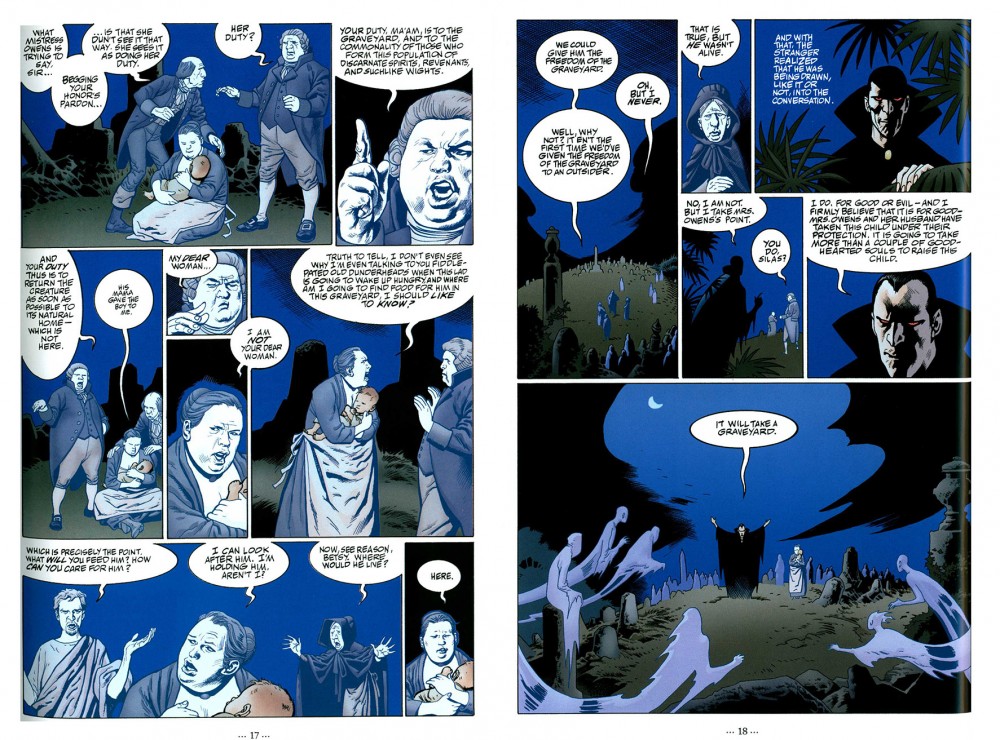
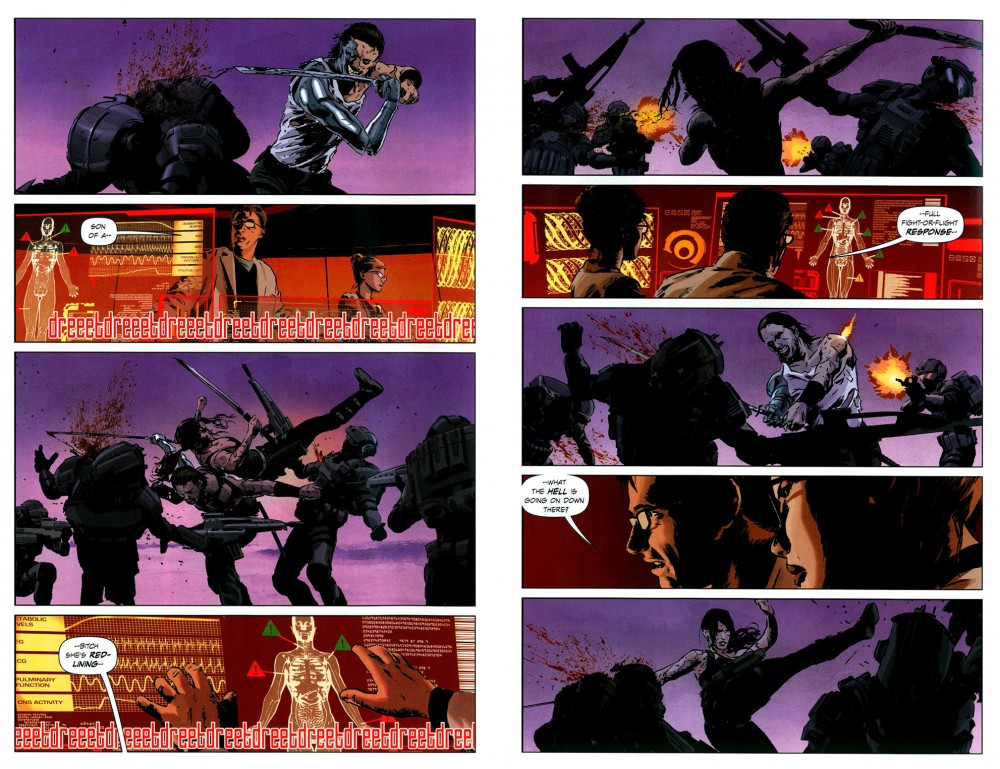
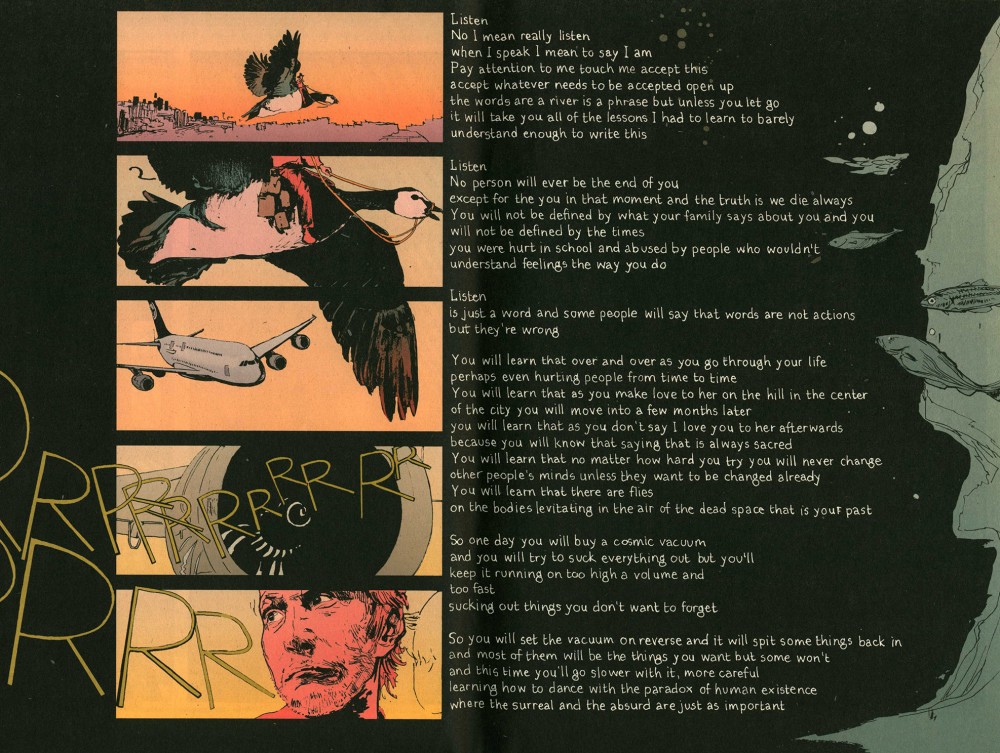
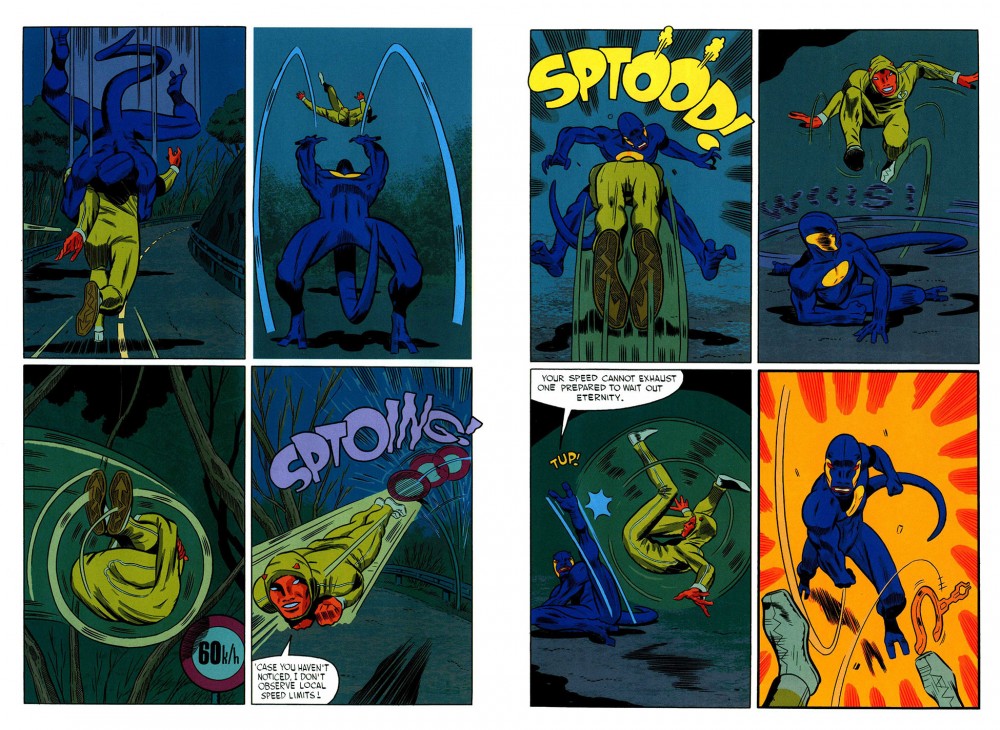
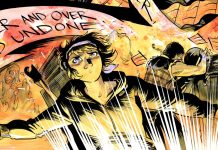
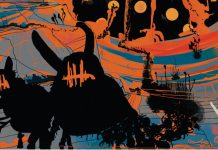



Nightworld looks great and I will pick it up especially with Romberger’s recommendation. I also advise anyone to get Rombergers The Late Child as his art is sublime
Thanks, James. I’m honored.
Comments are closed.